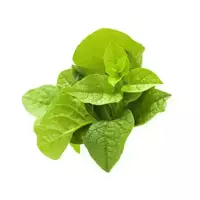Bazella

Bazella is a rather new ornamental plant for our person, which is also widely used in cooking. The small genus of basella belongs to the Basellaceae family, and in general it combines only five species of plants, one of which is endemic to East Africa and three for Madagascar.
However, the most common Asian species is basella white, which came to England during the great travels from the Malabar Islands. By the way, that is why it was called Malabar spinach, since in its homeland it is used as a leaf vegetable.
In addition, in many countries, basella has traditional significance for local cuisines, as eloquently evidenced by the names Ceylon spinach, Indian spinach or Philippine spinach. Currently, basella is also cultivated in some South American countries.
Basella alba or basella white is a curly perennial liana that can be up to 9 meters long. The plant is characterized by rather fleshy stems and leaves, the consistency of which can be called mucous.
In autumn, you can transplant a small-sized basella into a pot and put it on the windowsill, then in winter you will have a source of juicy, tasty and very useful greens. With simple care, the basella tolerates room conditions well, needing only spraying with water and abundant watering. Therefore, even you have not yet decided to include basella on your menu, this plant will undoubtedly decorate your garden or balcony.
For a long time, the plant has been used in alternative medicine in Southeast Asia as a sedative, astringent, diuretic and mild laxative. Chinese doctors use basella to neutralize poisons and reduce temperature. Moreover, these are just a few aspects of the versatile use of the plant, which is characterized by healing properties completely, from roots to fruits.
In the cuisines of the peoples of Africa and Southeast Asia, basella plays a rather important role - the juicy leaves of the plant taste really very much like spinach and are distinguished by a delicate aroma. When raw, it is customary to add them to salads and sandwiches. Bazella leaves are often brewed - the result is an excellent alternative to traditional tea.
In addition, based on basella leaves, puree and soups are prepared, they are added to a variety of vegetable dishes with curry, garlic and pepper. But mature bazella fruits are used as a food dye for sweets and pastries, and the presence of a minimum amount of lemon juice only enhances the effect.
Baselles 19 kKal
Energy value of basella (Ratio of proteins, fats, carbohydrates - ju):
Proteins: 1.8 g (~ 7 kCal)
Fats: 0.3 g (~ 3 kCal)
Carbohydrates: 3.4 g (~ 14 kCal)
Energy ratio (bj | y): 38% | 14% | 72%
 Español
Español Français
Français Português
Português Русский
Русский 简体中文
简体中文 繁體中文
繁體中文 日本語
日本語 한국어
한국어 العربية
العربية Türkçe
Türkçe Қазақ
Қазақ Deutsch
Deutsch Italiano
Italiano Українська
Українська
